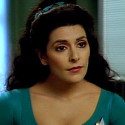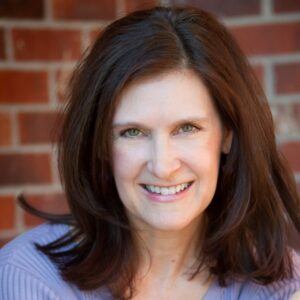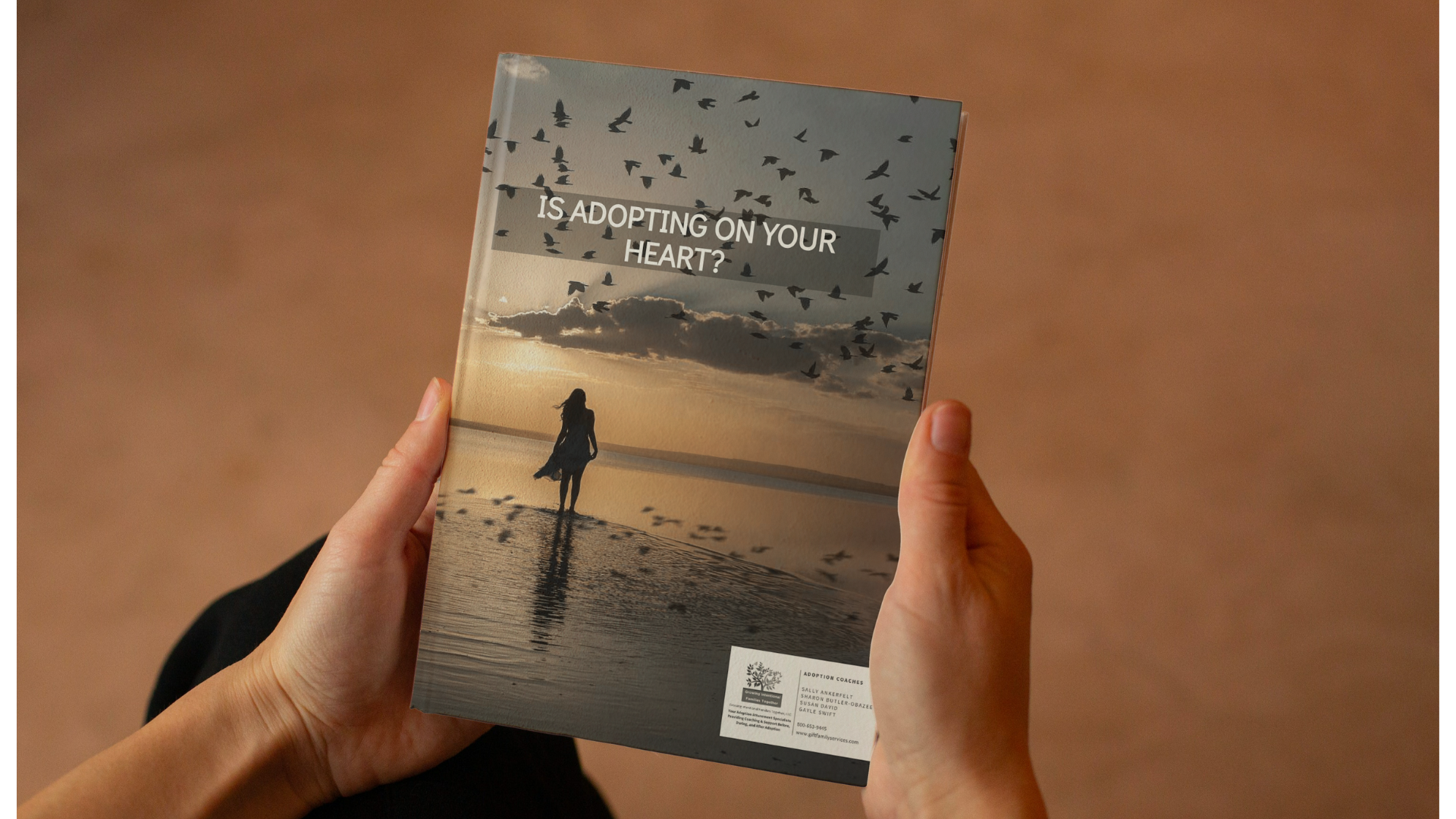I was pretty successful with this method. I earned several degrees, didn’t marry several Mr Wrongs, and navigated several medical interventions – all with the power of my intellect (which is not as colossal as it may sound here, and there weren’t THAT many Mr Wrongs down on one knee).
But when I arrived on the doorstep of adoption, I needed to take my default Data approach (sensible, information-based)

and add in the less familiar Deanna Troi approach (sensitive, compassion-based). Adoption and, more specifically, OPEN adoption, was something I couldn’t think my way through. I couldn’t study my way through or weigh my options through or test my way through with a #2 pencil.
I had to FEEL my way through.
Open adoption has engendered a huge shift in how I move through life. From Day 1 with Tessa’s first mom, Crystal (contributor to our how-to book on open adoption), I have had opportunities to choose between what feels right and what makes sense in cases where they are at odds.
Pulling another organ into service for decision-making and leadership has had an added benefit: parenting itself requires the involvement of one’s heart as well as one’s head. I couldn’t think my way through my son’s fight with his BFF. I couldn’t think my way through one of my daughter’s tantrums (no thinking occurs for either of us during one of those). Book learning goes only so far.
It’s not that I turn off my intellect, but that I also tune into my heart for answers. My friend Gayle Swift calls this AQ, Adoption-attunement Quotient.
Living from my heart requires me to just. be. present. Abiding in a situation and with the people in it. Being open to insight, inspiration and intuition. Which I can add to intellect.
Open adoption has brought me more deeply into thinking + feeling. I used both my head and heart to navigate Tessa’s reunion with her first dad, and I used both methods to help Reed with some questions he had about his first parents.
I’m not saying that all problems are easily solved because I’ve got such massive brainpower and a huge, unerring heart. I make lots and lots of mistakes every single day, and some are whoppers.
I’m saying that open adoption requires that I see things from the perspectives of the others involved, that I understand the effects of my actions on them, and that I use both my head and heart as I move through life. In other words living in open adoption has taken me where I hadn’t boldly gone before.
Images: Wikipedia
~~~~~
 Lori Holden writes from Denver at LavenderLuz.com. Her book, The Open-Hearted Way to Open Adoption: Helping Your Child Grow Up Whole, written with her daughter’s birth mom, is available in hardcover and e-book through Amazon or your favorite online bookseller.
Lori Holden writes from Denver at LavenderLuz.com. Her book, The Open-Hearted Way to Open Adoption: Helping Your Child Grow Up Whole, written with her daughter’s birth mom, is available in hardcover and e-book through Amazon or your favorite online bookseller.
Our review of Lori’s book:
 Open adoption has moved beyond the experimental stage and become the norm for most contemporary domestic adoptions. It has also created awareness that even with international adoptions, every effort should be made to gather as much birth family information, to preserve and respect these ties and to foster ongoing communication. We now recognize that connection to and respect for an adopted child’s biological roots is integral to successfully unify their dual heritage. Still, the concept remains shrouded in apprehension, confusion and curiosity. How is it possible for a child to have two sets of parents involved in their lives?
Open adoption has moved beyond the experimental stage and become the norm for most contemporary domestic adoptions. It has also created awareness that even with international adoptions, every effort should be made to gather as much birth family information, to preserve and respect these ties and to foster ongoing communication. We now recognize that connection to and respect for an adopted child’s biological roots is integral to successfully unify their dual heritage. Still, the concept remains shrouded in apprehension, confusion and curiosity. How is it possible for a child to have two sets of parents involved in their lives?
Questions abound in the minds of prospective adopters as well as expectant parents contemplating adoption for their unborn child. (Do we need a contract? Is it enforceable? Desirable? Isn’t open adoption confusing for the child?) These and many more issues are addressed in The Open-hearted Way to Open Adoption by Lori Holden and Crystal Hass. They are the adoptive mother and birthmother who have an open adoption relationship.
There are many reasons to recommend this excellent book. It overflows with practical suggestions for how to navigate the constantly changing seas that permeate open adoption. Not just for adoptive parents, it offers ideas for all members of the triad because the three are inextricably connected. Each will be a permanent part of the child. Only the degree and level of involvement will vary. The influences of DNA are forever, just as the influence of the adoptive family’s nurturing will permanently shape the child. (Lori refers to these factors as biology and biography.)
Lori and Crystal Hass (the birthmother of one of Lori’s children,) share strategies, ideas and personal anecdotes that are valuable, sensible and practical. They offer options not a specific blueprint for every adoptive family to follow. This makes sense since each adoption is unique. Their honesty and shared experience provide a window into living an open adoption journey. They reveal that open adoption is not without challenges and suggest “Talking about it and bringing your emotions up to a conscious level allows a healing release to occur … and prevents misunderstandings from cropping up.”
But the greatest value of The Open-hearted Way to Open Adoption is the philosophical assumption that underpins the book: open adoption is fundamentally an attitude that must infuse the relationship and all of the parenting decisions. The child’s best interest is the foundational premise. This may sound like an obvious fact, but all too often–especially in the past–adoption considers the comfort level, fears and of the adults over the needs of the child. Yes, each of these is an important factor, but the foremost criteria must to be child-focused. Many fear that children will be confused or distressed by having an ongoing relationship with a birth parent/s. Lori responds, “Openness is not the cause of any eruptions but instead can actually be part of the solution to them. If you’ve established an open relationship with your child, he is more likely to allow you into his innermost thoughts and fears. He then doesn’t have to face them without you. But if you are closed, he is more alone.” [emphasis added]
The Open-hearted Way to Open Adoption is a positive and inspiring book that will touch your heart as well as provide you with persuasive, practical and useful ideas. I am an adoption coach and a mom of now-adult children who came to us in the 1980s through closed adoptions. My children have reconnected with their birth mothers and I have seen first-hand the beneficial impact this reunion has brought all of us but most especially my children and their birth mothers. Lori points out that she takes her children to various professional who can provide services that she cannot: physician, dentist, therapist, etc. She writes, “I can’t fill a certain emotional need that Tessa has, but I can take her to the well.” (Tessa’s birth mother, Crystal) That is love and that is parenting with a child’s best interest at heart. I would assert that no adoptive parent want to leave their children unsupported as they process difficult parts of the adoption experience.
Open adoption is not easy nor is it perfect, but it is far better than the old secrecy-based closed adoptions. The greatest ingredient to success is a heart-connected attitude. This book offers a welcome, worthwhile resource for parents who are embarking on the adventure of open adoption parenting. As Lori writes, “Open adoption is a journey rather than a destination.”



I did not have the experience of an open adoption but I can surely see the value in it for each party in the adoption triangle. For me, like yourself, who adopted in an era that was just beginning to try out open adoption, I am playing a sort of “catch up” game. It is no longer my decision on how open; it is up to each of my children as adult adoptees on how much they want. I do hope that they choose to reconnect. And I am glad that today families have an even greater opportunity to create and live open adoption plans and to parent with their hearts with love and not fear.